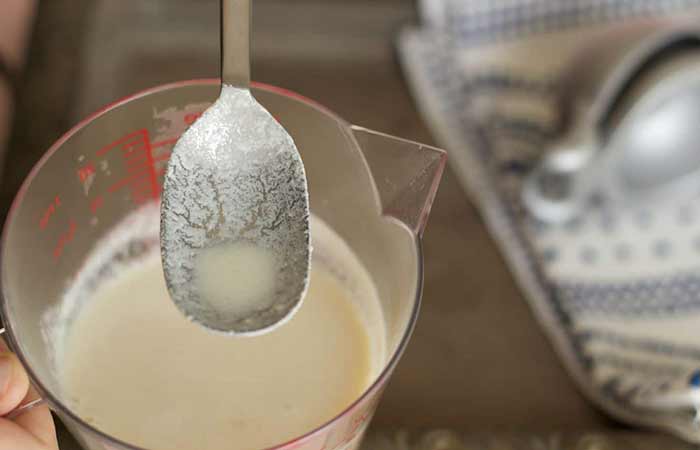Is Buttermilk a Probiotic?
Buttermilk, like other naturally fermented foods, have plenty of live cultures that qualify then to be probiotics. Buttermilk is made by churning milk and butter while introducing good bacteria into the mixture. The yogurt-based drink made with lactic acid bacteria will have Lactobacillus bacteria which is great for gut health among other benefits.
Besides having probiotic, this dairy product has a tart and tangy taste with less lactose content. This means that it’s suitable too for lactose intolerance individuals. Because buttermilk is more of a processed but natural probiotic, there’s more tomorrow to learn about it.
Take a look at the specific types of bacteria that buttermilk has, as well as the nutrients and their benefits, and lastly, a quick buttermilk probiotic drink recipe.

What Probiotics does Buttermilk have?
In the process of making buttermilk, lactic acid bacteria such as Lactobacillus Acidophilus is reintroduced into the drink to boost its good bacteria, as well as to give it its sour taste.
There are other cultures belonging to the Lactococcus lactis species and subspecies found in buttermilk as they are the easiest lactic acid bacteria that can be inoculated into the drink.
As a yogurt-based drink, there could be other probiotic microorganisms such as Lactobacillus bulgaricus and Streptococcus thermophilus.
Another probiotic that may be available in the drink is bifidobacterium. Bifidobacterium has multiple strains that are naturally present in yogurt-based and fermented dairy probiotic supplements. Other fermented vegetables like kimchi and sauerkraut also have bacteria.
Additional Nutrients in Buttermilk
Buttermilk undergoes a fermentation and pasteurization process hence it has low fat and protein content. However, it still contains high nutrient levels in the drink. It remains a good source of vitamin B12, potassium, phosphorus, and riboflavin.
It also has a considerable amount of calcium in the drink beneficial for bone growth and stability, sizable protein content Great for increasing the strength of bones, muscles, and skin. According to the United States Department of Agriculture, buttermilk generally contains a vast range of vitamins and minerals including;
- Calcium
- Iron
- Magnesium
- Phosphorus
- Potassium
- Sodium
- Zinc
- Vitamin B – riboflavin
- Vitamin B12, among others
Benefits of Buttermilk as a Probiotic Drink
Packed with all these vitamins, nutrients, minerals, buttermilk has the potential to be quite beneficial to the body. Here are a few of those benefits;
- Aids with antibiotic properties – because of the Lactococcus lactis present on the buttermilk, it can help to ward off and fight gram-positive bacteria found in food. Pathogens such as Listeria, Staphylococcus, and Clostridium can easily be destroyed by the bacteria.
- Boosts the immune system – the bacteria in the drink is effective in delivering antigens to the respiratory tract which stimulates the mucosal epithelium to protect itself. It also can protect against non-respiratory pathogens, such as HIV, Human papillomavirus, and the malarial parasite.
- With strong bacterial strains in the drink, essential bacteria are delivered to the intestines and the body in general. This is essential for treating other gastrointestinal tract issues such as irritable bowel disease.
- Reduces inflammation in the body
- Cleanses the body of harmful bacteria and toxins
- Maximizes the absorption of vitamins and minerals in the body.
Several studies indicate that natural probiotics with live cultures may not be as effective as supplements. However, they too have proven to have multiple benefits most of which are exhibited by the two main bacteria present, Lactococcus lactis and Lactobacillus acidophilus.
Simple DIY Buttermilk Probiotic Drink Recipe
Here’s a simple DIY buttermilk probiotic drink recipe.
Ingredients
- Half a cup of buttermilk either store-bought or home cultured
- Whole milk – one to two quarts. You can choose 1% or 2 %(personal preference)
- Half a gallon jar with a tight-fitting lid
Instructions
- Pour your buttermilk into the half-gallon jar. Ensure the jar is clean and have confirmed that it closes tightly.
- Add in the plain whole milk.
- Screw-in the lid tightly and shake the contents vigorously for about a minute or two.
- Place in a warm environment but away from direct sunlight. Let it sit for 12 hours, preferably 24 hours. Allow it to thicken.
- Refrigerate when the mixture is thick.
Sources
- https://ndb.nal.usda.gov/ndb/foods/show/81
- https://healthyeating.sfgate.com/benefits-buttermilk-4044.html
- https://www.foodiewithfamily.com/homemade-cultured-buttermilk/
- https://ods.od.nih.gov/factsheets/Probiotics-HealthProfessional/
- https://www.lovebugprobiotics.com/why-you-should-include-kefir-and-buttermilk-in-your-everyday-diet/
- https://balanceone.com/blogs/news/is-yogurt-as-effective-as-probiotic-supplements